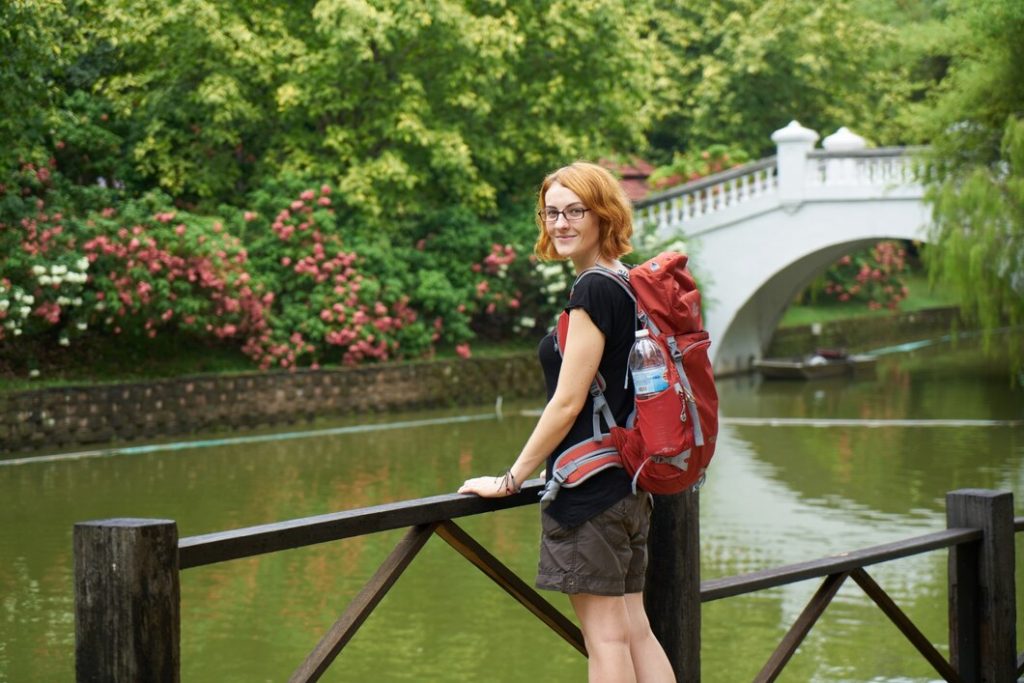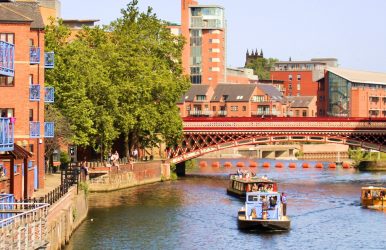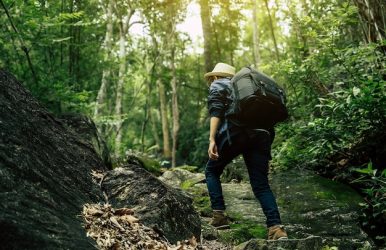Unique Things To Do In Tulsa: Into The Land Of Art Deco Architecture
BY Sibashree Nov 14, 2024
Once known as the Oil Capital of the World, Tulsa today is known for its concentration of art deco architecture, and a cosmopolitan vibe. On the Arkansas River, the city of Oklahoma is also the quintessence of the famous “Southern Hospitality” of the nation. Further, Tulsa offers the best fine dining experience, making it an ideal destination for culinary tourism in Oklahoma or the entire USA. In fact, forums like Secret Food Tours are now conducting food tours in the city. This is the ultimate food adventure where you peep into famous restaurants’ kitchens. Nevertheless, beyond food tourism, the entire travel landscape in Tulsa looks promising. In fact, the Tulsa Regional Chamber has decided that Tulsa Regional Tourism will market the city as a center for tourism, sports, and culture. Do you also want to explore this beautiful city of Oklahoma? Here is a brief guide for you. Unique Things To Do In Tulsa: Explore Food And More The Tulsa Regional Chamber portrayed a happy picture of Tourism in Tulsa in 2022-2023. In the 2022-23 fiscal year, the hotels in Tulsa created a market impact of $317.2 million. The numbers being so promising have encouraged the Tulsa Regional Chamber to start the Improve Our Tulsa program. This is an improvement package with a capital of $ 814 million to improve the Cox Business Convention Center, Tulsa Zoo, Tulsa Performing Arts Center, etc. All these market figures and initiatives show Tulsa’s rise as a tourism destination in the USA. However, to explore the unique things to do in Tulsa, you will have to get your itinerary right first. 1. Visiting the Cave House https://www.instagram.com/p/Cq0vYy7purr/?img_index=1 Built in Tulsa in 1924, the Cave House is now one of the city’s most important landmarks. It was a chicken restaurant earlier, and today, it is a great place for family adventure with amusing stories. The entry fee to the Cave House is $15, and kids under 13 can get entry to the Cave House at $7.50. 2. Exploring the Gilcrease Museum https://www.instagram.com/p/CLMchHKj1KV/ Operating Hours: 6 AM to 11 PM Entry Fee: $5-8 Do you want to visit the best artwork of the American West? Gilcrease Museum should be your go-to destination. Frederic Remington, Charles Marion Russell, and Frank Tenney Johnson are some noted artists to feature in this museum. The Pioneer Garden, Rock Garden, and Pre-Colombian Garden are part of its 23-acre outdoor theme garden. 3. Visiting the Philbrook Museum of Art Operating Hours: Wednesday to Sunday (Except Friday) - 9 AM to 5 PM Friday: 9 AM to 9 PM Monday And Tuesday - Closed Entry Fee: Free for Children below 2, $18 for Adults and $8 for Youth Amidst expansive gardens stands the Philbrook Museum of Art, one of the oldest art museums in the country. It has a whopping collection of more than 200000 objects to tell unique stories of human history. Along with the other collectibles, the Philbrook Museum of Art has now announced the launch of a new exhibit. It has artwork from the Pennsylvania Academy of Fine Arts or PAF. This exhibit will be on display from 25th September to 29th December 2024. 4. Visiting Tulsa Zoo Operation Hours: 9 AM to 5 PM Entry Fee: Free for children below 3 Years, $10 for children from 3-11, $12 for 18-64 years old, and $12 for 65 years and above Located in the Mohawak Park of Tulsa, Tulsa Zoo has state-of-the-art exhibits. It is also a place to encounter animals from all over the world. In this zoo, You will meet animals like the Malayan Tiger, Komodo dragon, snow leopard, Chinese alligators, etc. Further, the zoo is a great place for birders with species like the “fawn-breasted bowerbird,” blue-crowned hanging parrot, and more. Did You Know?Tulsa Zoo was recently in the news for welcoming five Malayan tiger cubs. These tigers belong to critically endangered species, and the birth of the five cubs has increased the number of Malayan cubs in North America by 10%.“The survival of these five cubs is a major milestone for the critically endangered Malayan tiger population. Each day, we weighed the cubs and completed health checks and supplemental feedings. The opportunity to visually inspect the cubs, monitor their progress, and intervene if necessary is paramount.”Jordan Piha, Curator of Mammals, Tulsa Zoo Fine Dining: Experience One Of The Best Things To Do In Tulsa Trying the local delicacies at fine dining restaurants is one of the best things to do in Tulsa. These restaurants have their staples and daily specials for the gastronomic delight of the visitors. Here is a list of some of the best fine-dining restaurants in Tulsa. 1. Kilkenny's Irish Pub https://www.instagram.com/p/C4YdPUPOl-n/ Phone Number: +1 918-582-8282 Tour and Travel Rating: 4.5 With a quaint charm, Kilkenny's Irish Pub serves the best corned beef in Tulsa. Also, you can never have enough of the Irish stew at Kilkenny's Irish Pub. Further, Kilkenny's Irish Pub is an excellent eatery to try seafood like oysters and lobsters. Moreover, the bartender service here is friendly. So, you will feel like coming back. 2. SMOKE On Cherry Street https://www.instagram.com/p/C-li45JoaAM/ Phone Number: +1 918-949-4440 Tour and Travel Rating: 4.4 It’s bliss to try smoked trout salad and grilled oysters at SMOKE. The restaurant does every bit of justice to its name. Further, the chicken pasta here is delicious. The menu of SMOKE is “Inspired American.” So, the food served here is the quintessence of American delicacies served in the southern part of the country. Moreover, celebrated chef Erik Reynolds and other chefs here use locally produced veggies and steaks. In addition, you will find vegan-friendly, gluten-free, and vegetarian options in the restaurant. 3. Sisserou’s https://www.instagram.com/p/Cb0Q1EROJBm/?img_index=1 Phone Number: +1 918-576-6800 Tour and Travel Rating: 4.4 Do you want to try the Caribbean or Jamaican food in Tulsa? Sisserou’s is the go-to destination. It’s a sin not to try the rum cakes or the crab appetizers here. Further, the waffles here are quite good, and the presentation is even better with syrup and bananas. You can even try the fried jerk chicken at Sisserou’s. Moreover, the service here is good and quick. 4. Mahogany Prime Steakhouse https://www.instagram.com/p/CeBvV5QM8tk/ Phone Number: +1 918-494-4043 Tour and Travel Rating: 4.3 We had the best steak in Tulsa at Mahogany Prime Steakhouse. You will also find the sauteed mushroom and New York Strips here yummy. One more thing I am in absolute love with at Mahogany Prime Steakhouse is the crab cake. Of course, you will love the American staple, mac n cheese, here. Exploring The Art Deco Architecture Of Tulsa You will find the Deco District in Downtown Tulsa. Here, the most prominent buildings of the city have made a compact guild. Further, the Tulsa Preservation Commission has preserved and maintained the following art deco buildings in the city. Boulder on the Park Christ the King Church City Veterinary Hospital Davis Residence Webster High School, etc. The people of Tulsa have been in love with the Art Deco style since the oil money boosted the economy of Tulsa Downtown. Making its debut in a Paris exposition in 1925, the Art Deco style came to Tulsa a few years later. Also read Top 13 Famous Wonders Of India That You Must Visit! Top 10 Most Popular Paraguay Food That You Must Try. Top Tips For Motorbike Rental In Phuket – A Guide To Exploring The Island On Two Wheels.













